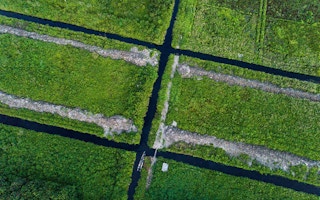This year’s Global Landscapes Forum, held mid-May in Jakarta, focused on peatlands, described as “one of the least-understood ecosystems” by Tim Christophersen, senior programme officer for Forests and Climate Change with the UN Environment Programme.
Led by the Centre for International Forestry Research, the Forum, an annual event since 2013, aims to shed light on the importance of peatlands not only for climate change mitigation, but also for community development and livelihoods.
Indonesia’s hosting the 2017 Forum is not surprising. The 2015 forest fires that spread toxic haze across South-east Asia had drawn attention to the country’s vast peatlands exceeded in size only by Brazil’s.
A new global wetlands map suggests that more peatlands exist in the tropics — at least three times more than previously estimated. Developed by scientists from the Sustainable Wetlands Adaptation and Mitigation Programme, the map shows South America housing most of the world’s peat by area and volume.
“
What we are doing is looking for new markets for the fruit. We believe that it’s going to help the economy and people and help preserve those environments.
Dennis del Castillo, director, Forest Management and Environmental Service Programme, Peru
Wetlands and peatlands play a vital role in climate change management as they store huge amounts of carbon. Knowing where they are located helps protect them against draining for cultivation, an activity which results in the release of vast amounts of carbon into the atmosphere.
Most of Indonesia’s peatlands have been drained to develop plantations and agricultural fields. Whether by big corporations or small-scale farmers, these activities are behind the forest fires that have become a seasonal phenomenon.
But what could grow in infertile, carbon-rich and waterlogged soil? Farmers in peatland areas around the world can take lessons from their Amazonian counterparts who grow aguaje, the fruit of the mauritia flexuosa palm.
“We are lucky that we have that plant and everybody likes it,” says Dennis del Castillo, director of the Forest Management and Environmental Service Programme, Peru, and one of the panelists on the Forum. “What we are doing is looking for new markets for the fruit. We believe that it’s going to help the economy and people and help preserve those environments,” he says.
Indeed, there is much more to learn about peatlands and the opportunities that surround it. In the end, successful and continuous peatlands conservation relies on each sector’s willingness to acquire new knowledge and collaborate.
This piece was produced by SciDev.Net’s Asia & Pacific desk.










